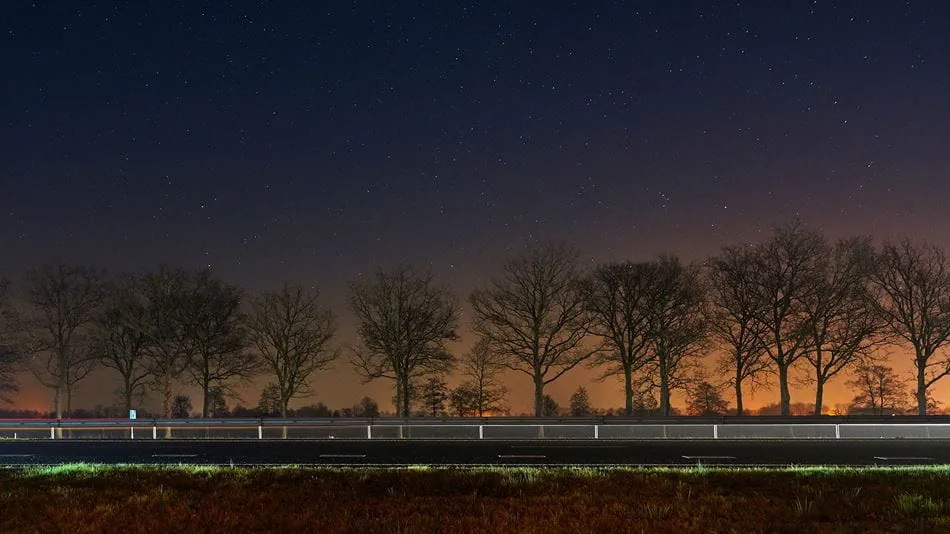 Pien Niehe
Europe Press Office,Amsterdam
Pien Niehe
Europe Press Office,Amsterdam
How to light a road that has been so carefully integrated into the national landscape of the Noardlike Fryske Wâlden? According to NEXT Architects and Arup, the best way to do this is to cherish the darkness.
Although the activities for the new highway De Centrale As (N356) are not finalised yet, the lighting design of NEXT Architects and Arup is already showing. By limiting the illumination, the lighting design unites architecture, nature, landscape and culture to strengthen the identity of the road.
De Centrale As opened in 2016 for traffic and is the newest 24km long road in Friesland between the cities of Dokkum and Nijega. In the highly urbanised Dutch countryside, this is an exceptional area where it is still possible to experience the natural night sky. NEXT and Arup took therefore a special approach in the lighting design. Their point of departure was not ‘where’ and ‘what type of’ lighting is needed. Rather, they examined the road from the standpoint of darkness. Was lighting even necessary? Taking this into account, safety on the roadway is addressed by providing visual cues through reflection and, where necessary, low light levels. This minimizes light pollution and also visual discomfort glare to drivers. For example, the contrast between light and darkness is minimised by dimming the light in the tunnel at night. If the contrast is too big, our eyes need time to adjust. This reduces the contrast between light and dark, making additional lighting around the aqueduct unnecessary.
Where lighting is necessary for safety, such as conflict areas, low light levels are used. This is the case at roundabouts where just one multi-headed lamppost has been placed as a beacon in the centre. The wooden lampposts enhance De Centrale As’ visual identity, while minimising the highway’s impact on the Noardlike Frisian Wâlden. The lighting design, however, is not just functional. At key moments where the main road passes through a landmark, the lighting accentuates a special feature of the infrastructural design, such as the cor-ten steel in the Doniawei. The lit landmarks provide an intuitive sense of location along the road. In addition to the minimal ecological impact, NEXT and Arup’s lighting design also minimised energy use, material usage for cables, and overall cost. This makes De Centrale As an exemplary project for roads without obtrusive light. This approach also fits within the broader vision to fully integrate the road and the landscape.
The project was commissioned by the province of Friesland.
